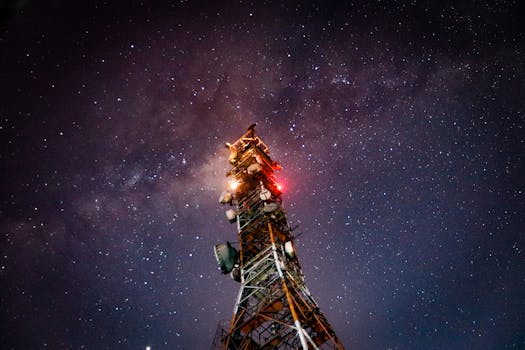
MEO Satellites: Revolutionizing Global Connectivity with Medium Earth Orbit Technology
MEO satellites, or Medium Earth Orbit satellites, are a type of satellite that operates in an orbit between 2,000 and 36,000 kilometers above the Earth’s surface. This orbit is higher than Low Earth Orbit (LEO) satellites but lower than Geostationary Orbit (GEO) satellites. MEO satellites are designed to provide a range of services, including navigation, communication, and Earth observation. In this article, we will explore the benefits and applications of MEO satellites, as well as their role in shaping the future of global connectivity.
MEO satellites offer several advantages over traditional GEO satellites. One of the primary benefits is their ability to provide faster and more reliable connections. Because MEO satellites are closer to the Earth’s surface than GEO satellites, they experience less signal delay, which enables faster data transfer rates. This makes MEO satellites ideal for applications that require real-time communication, such as video conferencing, online gaming, and remote healthcare.
How MEO Satellites Work
MEO satellites use a combination of advanced technologies to provide global connectivity. They are equipped with high-gain antennas that enable them to communicate with Earth stations and other satellites. MEO satellites also use advanced propulsion systems, such as ion engines, to maintain their orbit and adjust their position as needed. In addition, MEO satellites often employ advanced beam-forming technologies, which allow them to direct their signals to specific regions or users, increasing the efficiency and security of their communications.
Another key benefit of MEO satellites is their ability to provide global coverage with a smaller number of satellites than traditional GEO satellites. Because MEO satellites are in a higher orbit than LEO satellites, they can see a larger portion of the Earth’s surface, which enables them to provide coverage to a wider area with fewer satellites. This reduces the cost and complexity of deploying and maintaining a satellite constellation, making MEO satellites a more attractive option for many applications.
Applications of MEO Satellites
MEO satellites have a wide range of applications, including navigation, communication, Earth observation, and scientific research. One of the most well-known applications of MEO satellites is the Global Positioning System (GPS), which provides location information and timing signals to users around the world. MEO satellites are also used for communication, providing internet access, voice and data services, and broadcasting to remote or underserved areas.
In addition to these applications, MEO satellites are also used for Earth observation, providing critical data on weather patterns, climate change, and natural disasters. They are also used for scientific research, enabling scientists to study the Earth’s atmosphere, oceans, and land surfaces in unprecedented detail. With their ability to provide global coverage and fast data transfer rates, MEO satellites are playing an increasingly important role in many fields, from agriculture and conservation to emergency response and national security.
Challenges and Future Developments
Despite the many benefits and applications of MEO satellites, there are also several challenges associated with their development and deployment. One of the primary challenges is the high cost of launching and maintaining a satellite constellation. MEO satellites require significant investment in launch vehicles, ground infrastructure, and satellite design and construction. Additionally, MEO satellites must operate in a challenging environment, with extreme temperatures, radiation, and debris posing a risk to their longevity and performance.
However, despite these challenges, the future of MEO satellites looks bright. Advances in technology are reducing the cost and increasing the efficiency of satellite development and deployment. New launch vehicles, such as reusable rockets, are making it possible to launch satellites into orbit at a lower cost. Additionally, advances in materials and manufacturing are enabling the creation of smaller, more efficient satellites that can provide high-quality services at a lower cost.
In conclusion, MEO satellites are revolutionizing global connectivity with their fast and reliable communications, global coverage, and wide range of applications. As technology continues to advance and the cost of satellite development and deployment decreases, we can expect to see even more innovative applications of MEO satellites in the future. Whether it’s providing internet access to remote communities, enabling real-time communication for emergency response, or supporting scientific research and discovery, MEO satellites are playing an increasingly important role in shaping the future of our world.





